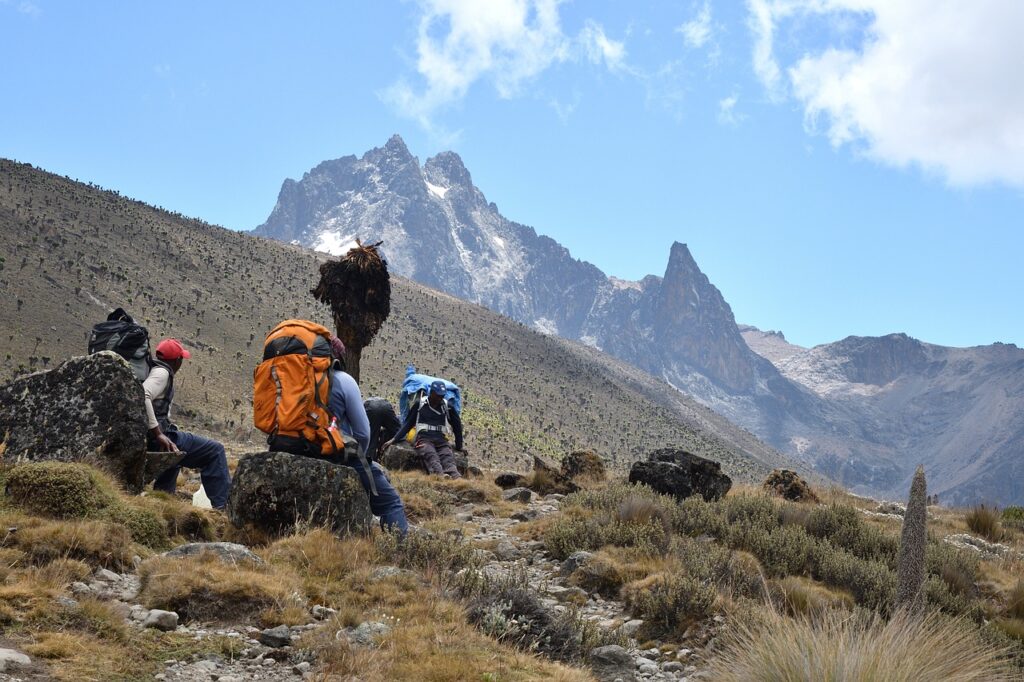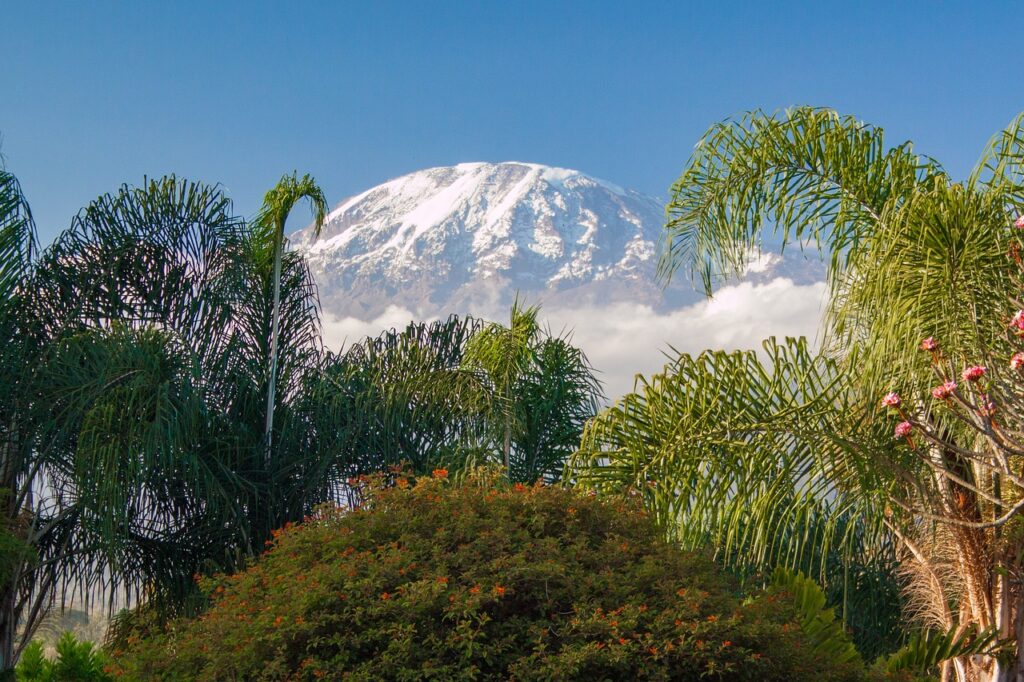Mount Kenya and Kilimanjaro
Mount Kenya and Kilimanjaro are two iconic peaks in East Africa, each with its own unique characteristics and cultural significance.
Both mountains are not only stunning natural landmarks but also play significant roles in the culture and economy of their respective countries. They draw adventurers, nature lovers, and those seeking a deeper connection with Africa’s breathtaking landscapes.

Mount Kenya
Location: Situated in central Kenya, it’s the highest mountain in the country and the second-highest in Africa, rising to 5,199 meters (17,057 feet).
Geography: It features a range of ecosystems, from dense forests at lower elevations to alpine meadows and glaciers near the summit. The mountain has several distinct peaks, with Batian Peak being the highest.
Biodiversity: Mount Kenya is a UNESCO World Heritage Site, known for its rich biodiversity. It’s home to unique flora and fauna, including endemic species like the Mount Kenya mole shrew and various rare plants.
Cultural Significance: The Kikuyu people, indigenous to the region, consider the mountain sacred, associating it with their creation myths and traditions.

Mount Kilimanjaro
Location: Located in Tanzania, Kilimanjaro is the highest mountain in Africa, standing at 5,895 meters (19,341 feet).
Geography: It’s a free-standing volcanic mountain with three cones: Kibo, Mawenzi, and Shira. The Kibo cone is the highest point, where climbers often reach the summit via the Uhuru Peak.
Climbing Routes: Kilimanjaro is famous for its trekking routes, including the Marangu, Machame, and Lemosho routes, attracting thousands of climbers each year.
Climate Zones: The mountain has diverse climate zones, ranging from tropical forests to arctic conditions at the summit, showcasing unique ecosystems and stunning landscapes.
Cultural Significance: Kilimanjaro is a symbol of Tanzania, representing the country’s natural beauty and attracting tourists from around the globe.


